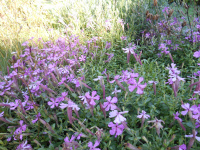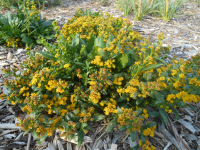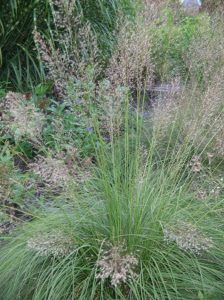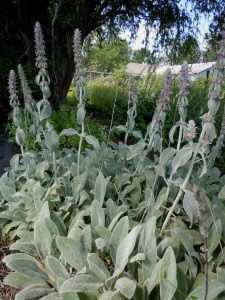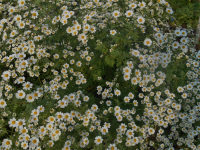Drought, Xeric & Dry Soil Plants
Showing 113–120 of 126 results
-
Silene schafta Schaft’s catchfly, Moss Z 5-7
One of the spectacular late season blooms –clusters of five-petaled, jagged-edge, bright magenta flowers on short mounds, September to October. Perfect for front of borders or rock gardens.
OUT OF STOCK
One of the spectacular late season blooms –clusters of five-petaled, jagged-edge, bright magenta flowers on short mounds, September to October. Perfect for front of borders or rock gardens.
Size: 6” x Slowly spreading
Care: full sun in well-drained to moist well-drained soil
Native: Russia
Awards: England’s Royal Horticultural Society Award of MeritIntroduced from its native Russia in 1844. First described by and probably collected by Johann Gmelin (1709-1755) German naturalist who spent years hunting plants in Russia and authored four-volume Flora Sibirica. In Greek mythology Silene was a companion of Bacchus who was covered with foam. William Robinson, father of the mixed perennial border, described the flowers of this species as being “very neat tufts.”
-
Solidago caesia syn. Solidago axillaris Blue-stemmed goldenrod, Wreath goldenrod Z 4-9
Graceful, arching wands of clustered gold, with contrasting blue-green stems in September-October. One of the last perennials to bloom. Clump forming, noninvasive perennial.
Graceful, arching wands of clustered gold, with contrasting blue-green stems, in September-October. Clump forming, noninvasive perennial.
Size: 18-24” x 16-20”
Care: part shade to shade in well-drained soil, drought tolerant
Native: Nova Scotia to WI, south to FL and west to TX, Wisconsin native
Wildlife Value: With both nectar and pollen this attracts, bees, wasps and flies. It is host to caterpillars of some moths.The Latin name is a combination of solidus and ago, meaning “I make whole”, referring to its historic medicinal uses. According to William Cullina it has antioxidant, diuretic, astringent and antifungal properties and was used to treat urinary tract and yeast infections, sore throats and diarrhea. (W. Cullina, NEWFS, p. 197) Named by Swedish botanist Linnaeus in 1753.
-
Solidago cutleri Cutler’s alpine goldenrod Z 3-9
Golden tufts of flowers on this mounding, compact, bone-hardy goldenrod July-September
Golden tufts of flowers on this mounding, compact, bone-hardy goldenrod July-September
Size: 6-10” x 12”
Care: sun in well-drained to moist well-drained soil
Native: Mountains of New England and NY, north through Nova Scotia
Wildlife Value: attracts butterfliesNamed for New England plant explorer Manasseh Cutler , Rhodora 10(113): 87. 1908 by M.L. Fernald
-
Sporobolus heterolepsis Prairie dropseed Zone 3 – 9
Mound of graceful thinnest of grass blades
The description in the Chiltern Seeds catalog cannot be improved: “This is the most elegant and refined of the North American prairie grasses …the finest texture composed of the thinnest of thin, thread-like, glossy green blades,.. in autumn turning deep orange before fading to a light copper for the winter. In late summer the plants bear, on very slender stalks high above the foliage, unbelievably delicate, graceful flower panicles, excellent for cutting. ”One of internationally known garden designer Piet Oudolf’s 100 “MUST HAVE” plants, Gardens Illustrated 94 (2013)
Size: 2’ x 2’
Care: Full sun in well-drained soil
Native: from Canada in the north to Texas in the south, Wisconsin native
Wildlife Value: seeds are food for birds
Awards: Missouri Botanic Garden Plant of Merit & Great Plants for Great Plains Grass of the Year.Sporobolos is Greek from sporo meaning seed and ballein meaning to cast forth because the seed readily falls from the flower (or dropseed, the common name). Ojibwa “Medicine Society” used roots to cure sores & “remove bile.”
-
Stachys byzantina Lamb’s ears, Woolly betony, Wooly woundwort Z 4-8
Pale pink-lavender flowers on silver-gray spikes in summer with foliage as soft as a lamb’s ear.
Pale pink-lavender flowers on silver-gray spikes in summer with foliage as soft as a lamb’s ear.
Size: 12 x 12 spreading
Care: Full sun in moist well-drained to well-drained soil, low fertility
Native: Iran
Wildlife Value: Drought tolerant & deer resistant.Stachys is an old greek word meaning, “spike.” Stachys was believed to cure almost everything. Italians urged people to: “sell your coat and buy betony.” The common name “woundwort” describes the leaves’ function as bandages. Cultivated by George Washington at Mount Vernon.
-
Syneilesis aconitifolia syn Senecio aconitifolius Shredded Umbrella Plant Z 3-8
Grown for its excellent foliage in dry shade. I guess “Shredded umbrella” best describes this plant with thin, dissected leaves atop a leafless stem. drooping in a rounded shape, like an umbrella, but it wouldn’t shelter from rain. Pale pink to white flowers in early to mid-summer.
OUT OF STOCK
Grown for its excellent foliage in dry shade. “Shredded umbrella” best describes this plant with thin, dissected leaves atop a leafless stem. Drooping in a rounded shape, like an umbrella, but it wouldn’t shelter from rain. Pale pink to white flowers in early to mid-summer.
Size: 3’ x 2’, spreads slowly by rhizomes
Care: part to full shade in moist, well-drained to well-drained soil. Drought tolerant once established.
Native: China, Korea & Japan and eastern Russia
Wildlife Value: Attracts bees, butterflies and birds. Deer and rabbit resistant.Described in Flora of China in 1833. Chinese used the whole plant for medicine, to relax and activate the tendons, alleviate pain around the waist and legs, and to treat most any injuries.
-
Tanacetum niveum Silver tansy, Snow tansy Z 5-9
Profusion of small classic daisies May-July atop fragrant silver foliage. Cut back for rebloom. Let the seeds drop for more plants next year. If you cut them back after the 1st flowering they will rebloom for most of the summer and fall.
Profusion of small classic daisies May-July atop fragrant silver foliage. Cut back for rebloom. Let the seeds drop for more plants next year. If you cut them back after the 1st flowering they will rebloom for most of the summer and fall.
Size: 2’ x 3’
Care: sun in moist well drained soil
Native: central & southern EuropeNamed by Carl Heinrich Schultz (1805-1867)
-
Thermopsis caroliniana syn. Thermopsis villosa Carolina lupine Z 4-9
Dense spikes of buttery yellow in June, resembling Baptisia or Lupin with clover like foliage.
ARCHIVED
Note: This is a plant not currently for sale. This is an archive page preserved for informational use.
Dense spikes of buttery yellow in June, resembling Baptisia or Lupin with clover-like foliage.
Size: 4’ x 2’ spreading
Care: Sun in well-drained soil. Drought & Heat tolerant.
Native: forest openings in the Appalachians
Wildlife Value: Attracts bees & butterflies, Deer & rabbit resistant.Collected before 1843

